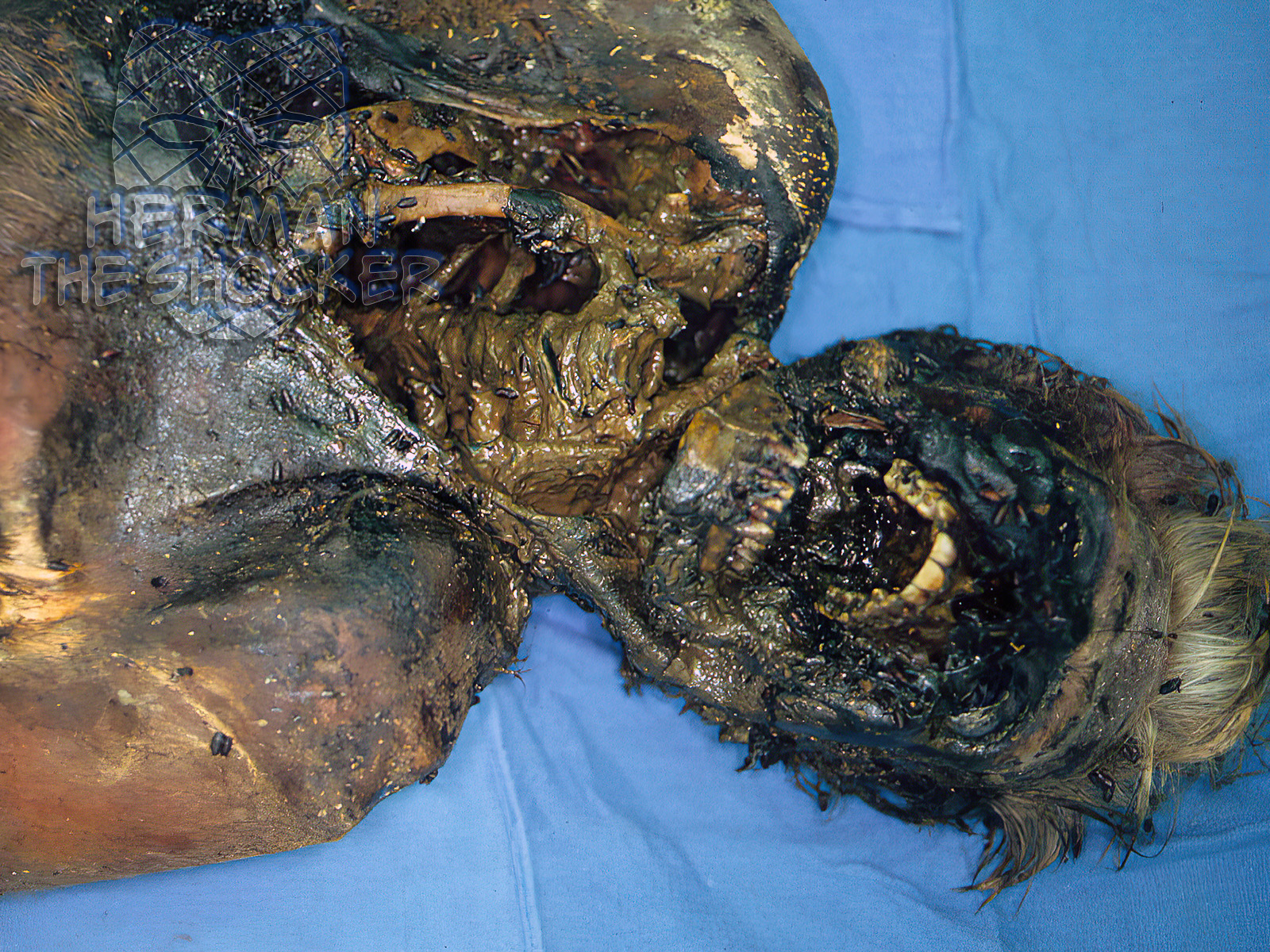Badly decomposed bodies like the one shown here are typically not visually identifiable. I have no further info about this case, but here’s some knowledge about identification of human remains.
An important duty of coroners, medical examiners, and forensic pathologists involves the identification (ID) of deceased individuals. While this process does not usually present many difficulties, the consequences of misidentification can be significant and long lasting. In many cases investigated by medicolegal death teams, initial inquiries will produce a preliminary or tentative identification. For example, important circumstantial evidence, such as a driver’s license found in the decedent’s possession, may point toward the identity of the deceased. However, a definitive positive identification is required.
This can be established by a variety of means with the most common method being visual identification by family members. Although this is most often utilized, it must be recognized that it is not a scientific method, and major mistakes have been known to occur. In addition, in a number of cases visual identification is not possible. This most often occurs when there has been facial disfigurement from trauma, fires, or putrefaction.
The most reliable methods of identification involve a more scientific approach where a unique feature of the unidentified decedent can be compared to a likely match. This requires that the features of both are compatible, with no significant features that do not match. Examples of scientific methods of identification include fingerprint comparison, dental comparison and x-ray comparisons, and DNA typing. For each of these methods (except for DNA typing) an antemortem (prior to death) record must exist and be available for a successful comparison to be made.
In a minority of cases a positive identification will not be able to be made. This situation is more common in large metropolitan areas among transient or homeless individuals when no one comes forward to identify the decedent despite the body being visually recognizable. This problem is compounded if bodies are badly decomposed or skeletonized, a situation that occurs in rural areas. When the body is not able to be identified, forensic pathologists will perform the full range of investigations so that if a possible identity is subsequently suggested then all of the necessary information and material for comparison will be available.
On occasion, a forensic artist may attempt a clay facial reconstruction over an unidentified skull, or a computer image of the face may be created, with publishing of such images to the public to find anyone who may recognize the person.
Latest posts









